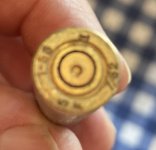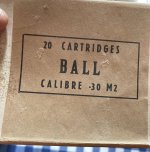Yep. I've inadvertently shot decaying powder surplus before, and even though mine was not corrosively primed and even though I cleaned the bore well, a month later I had a solid coat of fine red rust induced by the acid compounds in the breakdown products. It took a little work to remove every trace.
The SF headstamp is used by the French and by Argentina (Fábrica Militar de Cartuchos San Francisco, San Francisco, Argentina). But while Argentina came up with their own nearly-30-06 cartridge, the 7.65×61, and rechambered some of their 7.65×53 1909 Argentinian Mausers with them for target shooting just before WWI, I don't have any first-hand knowledge of them manufacturing or using 30-06, much less issuing it to their military, as the Columbian military did. So I think these are French, as already suggested. Probably 1955 from their first line, or perhaps it's the first batch of the year, but you would need to contact the French to see if they have and can share records. If you get a sharper photo of it, someone on a French BBS might be able to get more specific.


